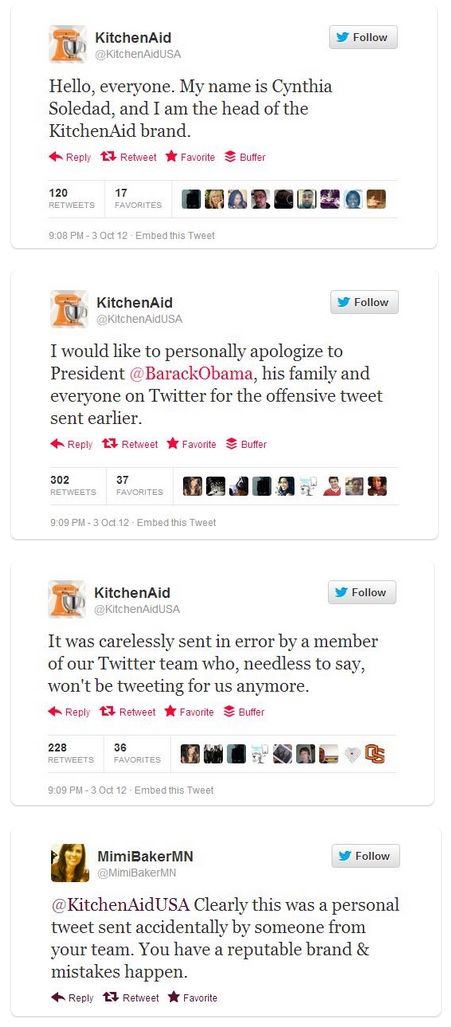Six Tips to Manage Your Online Reputation
Reading Time: 5 minutesBy Sue Kim, Digital Project Manager

Psst… did you hear?
Clients are talking about you – to their friends, family, and online. You’ve probably heard that word-of-mouth is the most effective way to gain a new client. And it’s even truer now that technology and the Internet are ingrained into our daily lives. It’s becoming easier for people to share experiences or leave a quick status updates online with a click of a few buttons on our smartphone on sites such as Yelp or Google+. A 2013 survey conducted by Dimensional Research found that 90% of their respondents reported that online reviews influenced their buying decisions. And customers who’ve had a bad experience are also more likely to write about it on social media or an online review site… leaving a digital record where that experience now becomes public for other potential clients to see.
Over the past decade, we’ve seen that it’s becoming the norm for companies to respond to criticism or backlash publically. In 2011, Nestle chose to ignore negative comments from consumers about Nestle’s unethical environmental practices on Facebook. Instead of addressing the issue at hand, Nestle ignored and deleted comments. When they did respond, they asked consumers to stop posting altered images of the Nestle logo. Eventually the situation escalated into PR crisis that led to Nestle closing their Facebook page. Nestle has now become a prime example of how not to manage your online business reputation.
An example of a good reputation management was Kitchen Aid’s actions after a member on Kitchen Aid’s Twitter team tweeted an offensive joke about the passing of President Obama’s grandmother. The head of Kitchen Aid’s brand was able to tweet a public apology within eight minutes of the offensive tweet going out. Even after the initial apology, they continued to tweet apologies to the public and to President Obama. This swift action on their part prevented what could have been a major social media crisis.

Knowing how to navigate the rough waters of online reputation management can seem daunting, but it could be a defining factor in preventing backlash or having a crisis on your hands. Therefore, in this month’s e-newsletter, we’re giving you six practical ways to manage your online reputation.
What makes up your online reputation?
Online reviews, conversations about you on social media, media coverage, employee reviews, etc., all contribute to your online reputation. In a nutshell, it’s how your company is perceived online based on what people are saying about you.
What is online reputation management?
Online reputation management is about utilizing different strategies to create a positive reputation for your company while weakening the validity of negative comments.
What are the major online review sites?
There are many online review sites that collect business reviews and/or product reviews. Some online review sites will be under the same parent company or work in partnership to share their reviews. For example, business listings on Insider Pages and Citysearch display reviews posted on either site. Bing Places and Yahoo Local work in partnership with Yelp to display Yelp reviews on their business listings. Some online review are geared towards specific industries so take some time to see what types are businesses are on the website. Also, we recommend checking to see where your competitors are listed. Here are just a few of the major online review sites:
- Angie’s List
- Better Business Bureau
- Bing Places (reviews are pulled from Yelp)
- Citysearch
- Glassdoor
- Google+ Local
- Insider Pages
- Judy’s Book
- Merchant Circle
- Yahoo Local (reviews are pulled from Yelp)
- Yellow Pages
- Yelp
Out of these, the top three powerhouses will be your social sites (Yelp, Facebook, and Google+ Local), as these tend to show up on page one of Google search results.
Six tips to manage your online reputation
- Check your online reputation regularly.
A simple way to see if your online reputation is positive or negative is to do a Google search of your practice name. Scan through the search results of page one and two. What do you see? Mostly positive reviews? Any negative news articles?There’s a funny little joke about SEO that says, “the best place to hide a dead body is page two of the Google search results.” If you have a bad article or review about you on page five, you probably don’t need to worry too much, because it’s really the first two, maybe three, pages that get the most traffic. Therefore, your goal should be having only positive articles, reviews, and comments about your business on the first two pages of Google’s search results.
- Claim your business on local listing sites.
The days of opening a phone book to find a business are over. More consumers are looking in a variety of places for business information online. Make sure your business is listed and “claimed” by you on the top business listing websites (Yelp, Yellow Pages, Angie’s List, Citysearch, etc.) Claiming the business will set you as the business owner and only you will be able to edit information on the listing.
- Monitor your online reviews weekly.
We recommend you check your reviews at least once a week. Many business listing will also allow users to leave reviews about the business. Just as annual checkups can help detect early signs of more serious illness in pets, monitoring your reviews frequently will help you catch any negative reviews quickly. Don’t wait until you have a PR crisis in your hands.
- Stop ignoring those negative reviews – Respond promptly.
When you respond to negative reviews it shows other people (your potential clients) reading the review that client satisfaction is important to your business. It shows you are listening to feedback and that their comments are important to you. While each response must be personalized to the situation, our general rule of thumb is to empathize with the client, keep your tone calm and neutral, and be proactive about resolving the issue (if applicable). Do not give specifics of a situation online, medically speaking or otherwise. Rather, best practice is to acknowledge what they are feeling and try to move the conversation offline.
- Yes, respond to positive reviews – in a timely manner.
When you receive a good review online, leave a response thanking your client for leaving a review. Not only does responding show that you care, that positive review just might convince a potential client in choosing your business. Also, replying to a client who leaves a review on social media like your Facebook Page or Google+ can encourage your other followers to leave a review as well.
- Ask for positive reviews from your happy clients.
The best way to weaken any negative comments about your business is to have more positive ones. The easiest way to receive positive comments is to ask for them. Train your front desk staff to ask for reviews from happy clients. Include business cards with links to your Yelp page in your discharge packet. Put up a small sign in your lobby. Positive reviews will cushion any future negative reviews so focus your efforts on encouraging positive reviews, comments, and articles from clients, media, and referring DVMs.
Managing your online reputation is not an easy task. It requires your consistent, proactive attention, but the gains are well worth the effort. We help many clients manage their online reputations. Please do not hesitate to contact us at info@blueprintsvmg.com if you have any questions of if you need assistance with your online reputation management.